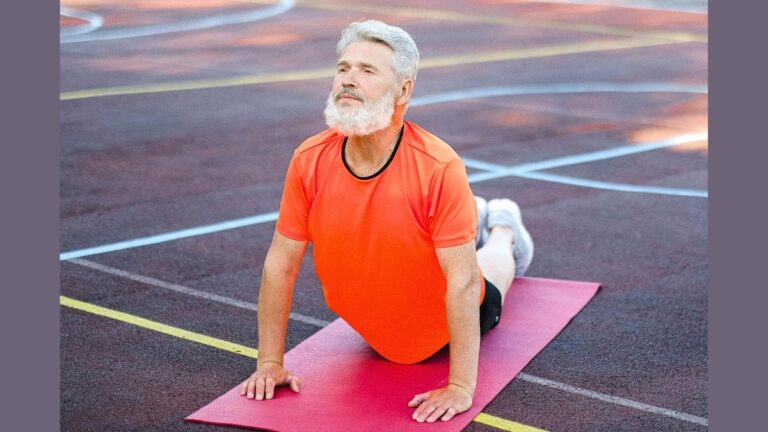The Over-50 Muscle Plan: 15 Proven Ways to Fight Sarcopenia With Bands & Bodyweight

After 50, you lose between 3–5% of your muscle mass every decade—but here’s the surprising truth: you don’t need to lift heavy weights to reverse it. This hits hard for many men. You feel weaker. Everyday tasks take more effort. Your body doesn’t bounce back the way it used to. And when your muscles shrink, your confidence drops with them.
This muscle loss is called sarcopenia, and it speeds up as you age. Most men lose around 30% of their total muscle mass across their lifetime. That’s a huge number. And the common advice—“just lift heavier”—can make things worse. Your joints aren’t the same at 50 as they were at 20. Heavy weights can lead to pain, strain, or injury. So you stop training. And the cycle continues.
Here’s the good news. Muscle building after 50 is still possible. You can get stronger with resistance training that uses lighter loads, resistance bands, and bodyweight moves. These tools are easier on your joints but still trigger muscle growth.

In this guide, you’ll learn 15 proven strategies to build real strength, improve functional fitness, and support sarcopenia prevention. You’ll also get simple nutrition and recovery tips that help you build dad strength without heavy lifting.
1. Why Lighter Resistance Still Builds Muscle After 50
When you hit 50, age-related muscle loss starts to speed up. You lose about 1–2% of muscle every year, and strength drops even faster. That’s why your arms feel weaker, stairs feel harder, and recovery takes longer. Heavy weights can help, but they also stress your joints. And that risk scares a lot of men away from training.
Here’s the good news: you don’t need heavy weights to build muscle. Studies show that lifting lighter loads for 6–30 reps can grow muscle (muscle hypertrophy) just as well as heavy lifting, as long as you push close to your limit. What matters is effort, not weight.

This matters even more because sarcopenia—age-related muscle loss—affects 5–13% of people in their 60s and up to 50% of people over 80. So you need a training style that builds strength without beating up your joints.
That’s where resistance bands and bodyweight work shine. Bands create continuous tension, which forces your stabilizing muscles to stay active through the whole rep. This makes your muscles work harder even with lighter loads. They also reduce injury risk because the resistance gets harder at the top of the movement, not at the bottom where joints are vulnerable.
The goal is simple: safe training that helps you stay strong for life.
Muscle Loss After 50 — The Fast Facts
You lose ~3–5% muscle per decade. But you can fight it without heavy weights.
Problem: Sarcopenia makes daily tasks harder.
Quick win: Lighter resistance + effort = muscle growth.
1. How to Do the Resistance Band Squat for Stronger Legs After 50
If getting up from chairs feels harder than before, resistance band squats can help. This move builds lower body strength without loading your joints with heavy weights. Strong legs make daily tasks easier, and they protect you from falls. And that matters a lot after 50.

The squat works your quads, hamstrings, glutes, and core. These muscles help you walk, climb stairs, and stay balanced. With bands, you get smooth resistance that’s easier on your knees.
If standing up from chairs feels harder, resistance band squats can help. This move builds your quads, hamstrings, glutes, and core without stressing your knees. Strong legs make walking, climbing stairs, and balance easier.
How to do it:
Step on the band with feet hip-width apart. Bring the top of the band over your shoulders. Push your hips back, bend your knees, and squat to about 90 degrees. Stand up by driving through your heels and keeping your chest lifted.
Avoid: knees caving in, rounding your back, or rising onto your toes.
Start with: 3 sets of 12–15 reps. Move to a thicker band when it feels easy.
2. How to Strengthen Your Chest with the Resistance Band Chest Press

If push-ups hurt your shoulders or wrists, the resistance band chest press gives you a safer way to build upper body strength. It lets you train your chest, shoulders, and triceps without the stress of heavy weights. And it works well for men over 50 who want strong arms for daily tasks.
If push-ups strain your shoulders, the band chest press gives you a safer way to train your chest, shoulders, and triceps.
How to do it: Attach the band to a door at chest height. Face away, step forward, and hold the handles. Press your hands straight out, then return slowly. Keep your posture tall and your elbows slightly bent.
Avoid: leaning too far forward, shrugging your shoulders, or letting the band snap back.
Start with: 3 sets of 10–15 reps. Increase tension by stepping farther forward or using a thicker band.
3. How to Perfect the Bodyweight Push-Up Progression
If push-ups feel hard or your form keeps breaking, you’re not alone. The problem is simple: your body isn’t ready for full floor push-ups yet. But you can fix that with a smart progression.

Start with wall push-ups. They teach you how to keep your hands under your shoulders and your core tight. When that becomes easy, move to incline push-ups on a table or bench. This lowers your body angle and builds more strength. Your final step is the floor push-up.
Push-ups work many muscles at the same time—your chest, shoulders, triceps, and core. That means you burn more energy and build functional strength without losing mobility. Keep your hands slightly wider than shoulder-width, squeeze your core, and move in a straight line.
Aim for 2–4 sets of 8–20 reps, depending on the variation you’re doing. You should finish the last few reps with effort, but not sloppy form.
4. How to Strengthen Your Back with Band Rows
If you sit a lot, your back gets weak and your shoulders roll forward. That leads to neck pain and poor posture. Band rows help fix this.
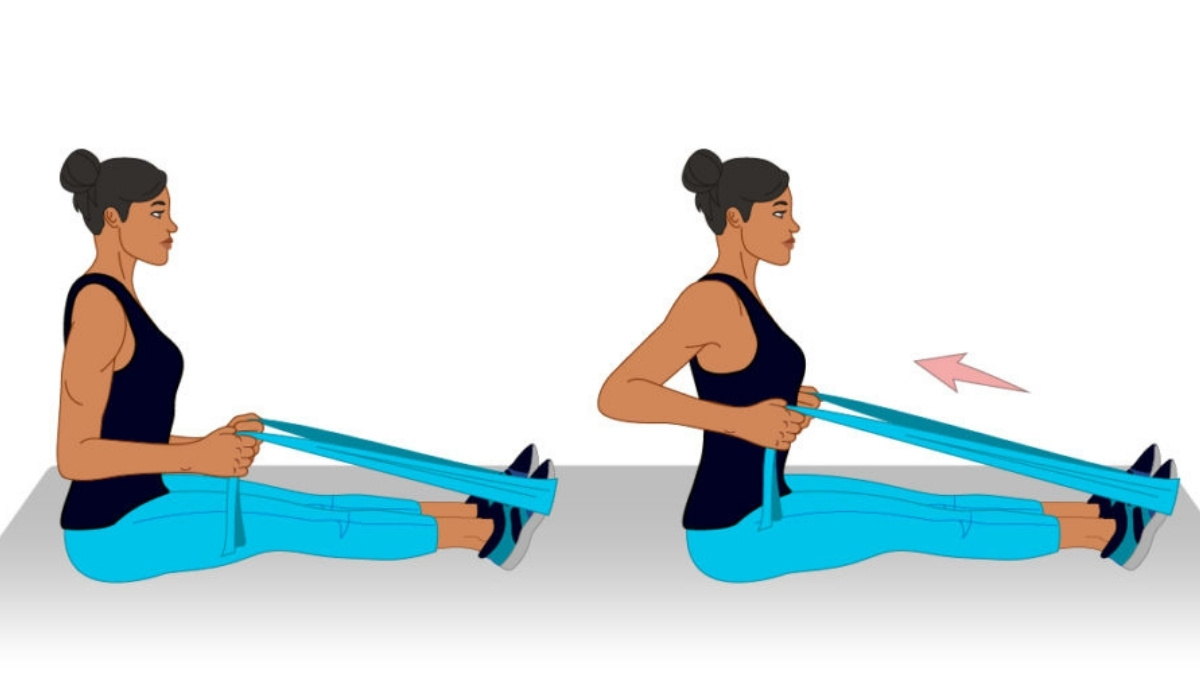
Anchor a resistance band at waist height or loop it around something sturdy. Step back, hold the handles, and pull them toward your ribs. Squeeze your shoulder blades like you’re trying to pinch a pencil behind you. Keep your chest up and your core steady.
Band rows train your lats, upper back, and the small muscles that keep your shoulders stable. Strong back muscles make it easier to stand tall and reduce the stress on your neck.
Do 3 sets of 12–15 reps. The last few reps should feel tough but controlled.
If you stay consistent, your posture improves, your shoulders feel stronger, and daily movement becomes easier.
5. How to Build Grip Strength with Farmer’s Carries
If your hands feel weak during simple tasks like opening jars or carrying groceries, your grip needs work. A stronger grip helps you stay active as you age. Research even shows that a firm grip connects to better overall health. And that’s why this exercise matters.

Pick two moderately heavy objects. Dumbbells, kettlebells, or even loaded bags work. Stand tall, hold the weight by your sides, and walk 40–60 feet. Keep your shoulders back and your core tight so the weight doesn’t pull you down.
This simple walk trains your hands, forearms, core, and posture at the same time. It also builds functional fitness, which means you move better in daily life.
Do 3–4 carries in each session. Rest between rounds so your grip stays strong enough for good form.
Stick with it, and daily tasks start to feel easier.
6. How to Master the Resistance Band Deadlift
If your lower back hurts when you lift things, the problem is usually your hip hinge. The resistance band deadlift helps you fix that without heavy weights.
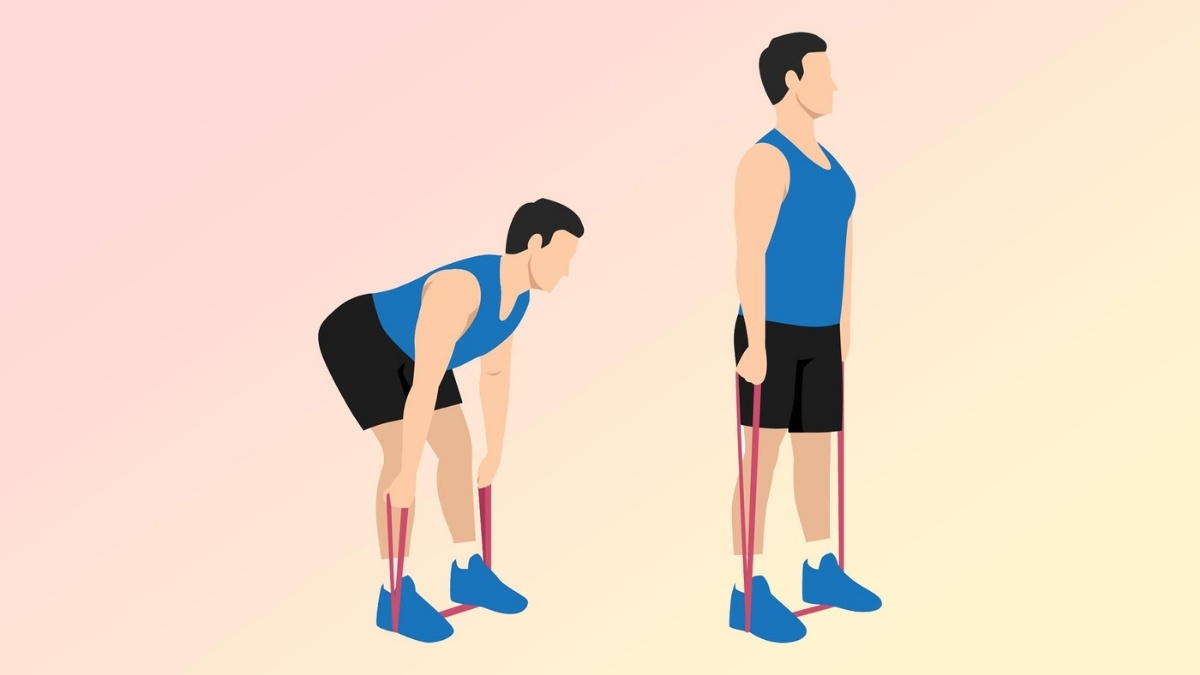
Stand on a strong band with your feet hip-width apart. Hold the ends at your sides. Push your hips back, keep your spine straight, and feel the stretch in your hamstrings. Then stand up tall. You’re lifting from your hips, not your back.
This deadlift variation trains your legs, core, and back at once. It also puts you inside the weight, which gives your lower back a safer position.
Do 3 sets of 10–12 reps. Move slow. Keep your form clean.
Over time, this helps you lift heavier things in real life without straining your back.
7. How to Strengthen Your Shoulders with the Band Overhead Press
If your shoulders feel weak or stiff when you reach up, this exercise fixes that. Strong shoulders protect the rotator cuff, which keeps your joints stable as you move. And weak shoulders get tired fast, so you feel older than you are.
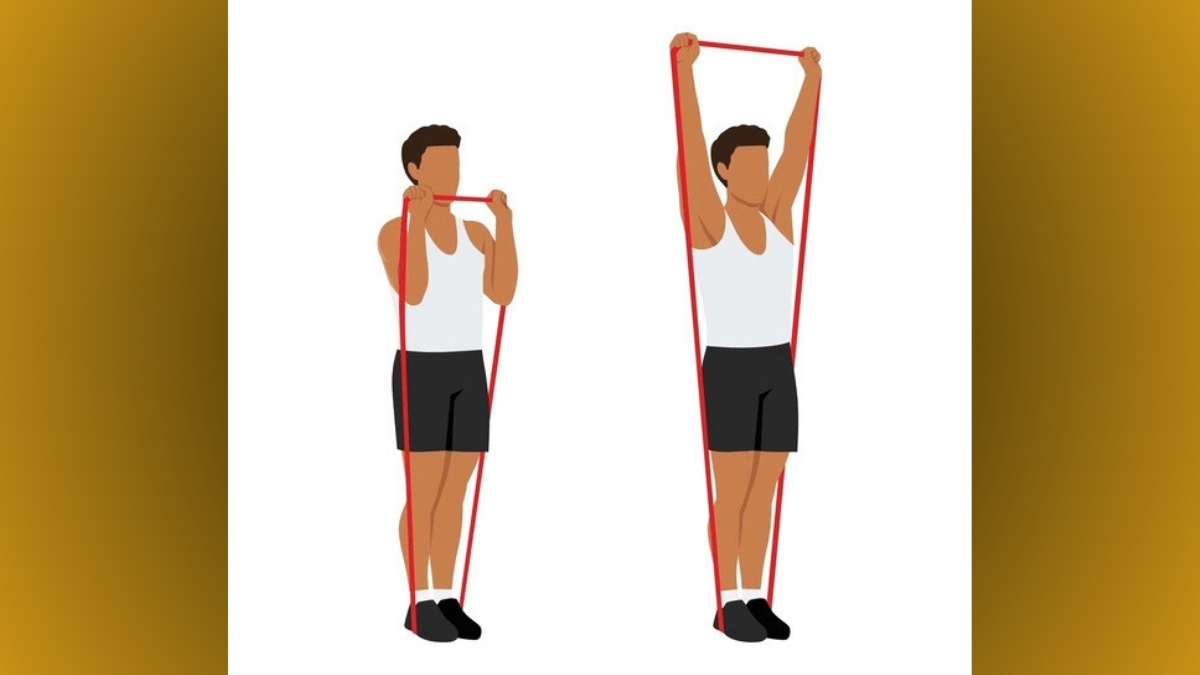
Stand on the center of the band and hold the handles. Press your hands straight overhead. Keep your ribs down so your back doesn’t arch. Move at a steady pace. Rushing makes your form fall apart.
This move builds functional pressing strength you use every day. You’ll reach higher, lift better, and feel more control in your upper body.
Do 3 sets of 10–15 reps. Stop if you feel sharp pain. Shoulders need steady work, not punishment.
8. How to Build Real Core Stability with Planks and Variations
If your lower back aches during simple tasks, your core isn’t doing its job. Your core supports every twist, bend, and reach. When it’s weak, your back takes the hit. And that’s why planks matter.

Start with a standard plank for 30–60 seconds. Keep your body straight from head to heels. Then add side planks to train your obliques. When that feels steady, add controlled moves like shoulder taps or leg lifts.
Do 3 sets of each variation. Quality matters more than holding forever.
A stronger core makes daily life easier. You stand taller. You move cleaner. You feel stronger all day.
9. How to Increase Leg Power with the Resistance Band Leg Press
If your knees feel weak on stairs or your legs tire fast, you need more leg power. A band leg press builds strength without putting your joints under heavy machine pressure.

Lie on your back and loop a band around your feet. Bring your knees in. Then press your feet away from your body until your legs straighten. Keep your core tight so your lower back stays flat.
This move works your quads, hamstrings, glutes, inner thighs, and core at once. It’s a safer way to build strength if heavy machines feel rough on your body.
Do 3 sets of 15–20 reps. Move slow. Make each rep count.
Your legs will feel stronger in daily life, which is the whole point.
10. How to Build Your Biceps with Resistance Band Curls
If your arms feel weak when lifting bags or doing daily chores, simple curls can help. Band curls give you tension through the whole movement, which helps your biceps grow.
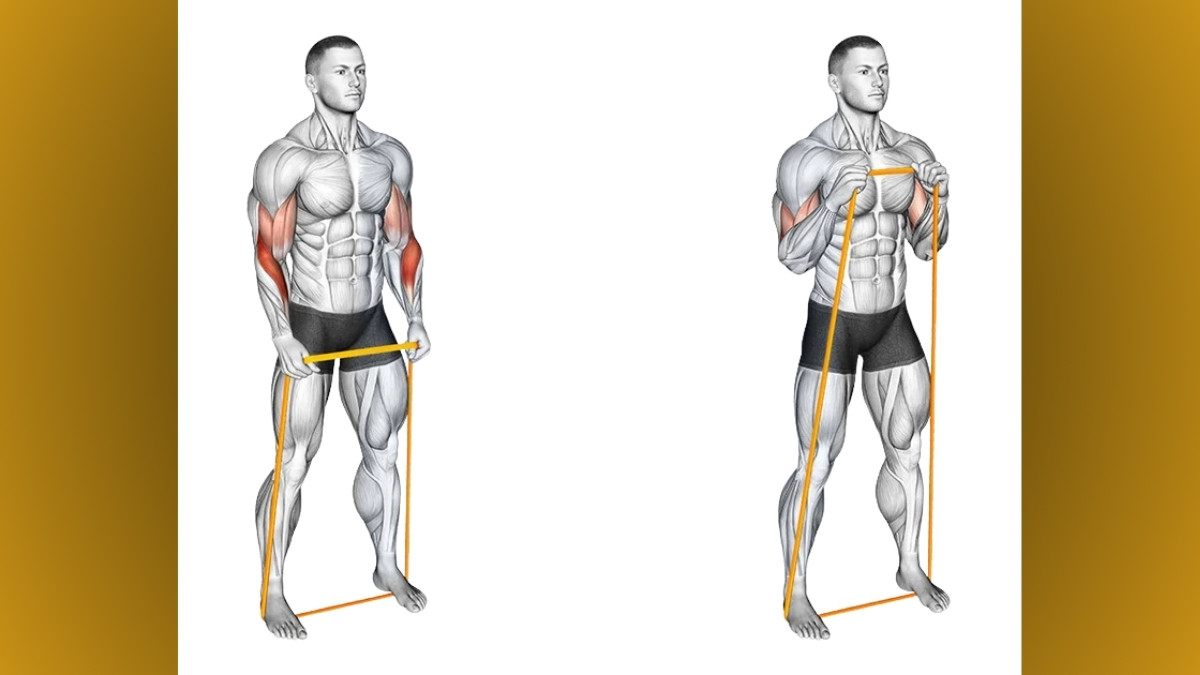
Stand on the band with your feet shoulder-width apart. Keep a small bend in your knees so your lower back stays safe. Hold the handles and curl them toward your shoulders. Move slow on the way up. Move even slower on the way down. That lowering phase builds a lot of strength.
You can change your grip. A narrow grip hits the outer part of your biceps. A wider grip targets the inner part. Both matter if you want full arm strength.
Do 3 sets of 12–15 reps. Stop the moment your form breaks. Good reps work. Bad reps don’t.
11. How Much Protein You Really Need to Build Muscle
If you feel like you’re training hard but not seeing muscle growth, protein is usually the missing piece. Most older adults need 1.2–2 grams of protein per kilogram of body weight each day. You also need 7–12 grams of leucine, because it helps start the muscle-building process.

Spread your protein across 4–5 meals. Big gaps make your body miss its chance to grow. Good choices include eggs, chicken, fish, dairy, beans, and lentils.
A simple post-workout rule helps: eat or drink something with a 3:1 or 4:1 carb-to-protein ratio within 30 minutes. Chocolate milk works well. One cup has about 22 grams of carbs and 8 grams of protein.
Here’s a sample plan for the day:
- Breakfast: 2 eggs + yogurt
- Lunch: Chicken, rice, and veggies
- Snack: Greek yogurt or cottage cheese
- Dinner: Fish or lean meat + potatoes
- Post-workout: Chocolate milk
Set your meals this way, and you’ll finally give your body the fuel it needs to grow.
12. How to Recover Faster After 50
If you feel sore for days after a workout, that’s normal with age. Your body repairs muscle slower now. And muscle only grows when you recover well.
Most people over 50 need up to 72 hours for full repair after strength sessions. That’s why recovery matters as much as your workout.

Aim for 7–9 hours of sleep each night. This is when your body fixes muscle fiber. Add active recovery days like walking, swimming, or light stretching. These keep blood flowing without stressing your joints.
A simple weekly plan looks like this:
- 3 days of strength training
- 2 days of Peloton or cardio
- Remaining days: walking, swimming, or easy movement
This rhythm keeps you strong without burning you out.
When you train smart and rest right, you feel younger, move better, and stay consistent. And that’s what really builds long-term strength.
13. How to Use Progressive Overload Without Heavy Weights

If your workouts feel easy, your body stops growing. That’s why you need progressive overload, even when you train at home with bands. The goal is simple. You slowly increase the challenge so your muscles keep getting stronger.
Start with 2–3 sets of 8–15 reps using a band that feels tough but manageable. As you get stronger, switch to a heavier band. You can also add more reps, slow your tempo, or shorten your rest. Even small changes help. One study found people did 31% more sit-to-stands in just 28 days using low-intensity training.
Track your workouts. Write down the band you used, reps, or tempo. This helps you see your progress and keeps you honest. Change the exercises every 4–6 weeks so your body keeps adapting.
Progress happens because you challenge your muscles a little more each time.
14. Your Simple 3-Day Weekly Routine
If you keep skipping workouts because you’re not sure what to do, this plan fixes that. You train full body three days a week, and each day has a clear focus.
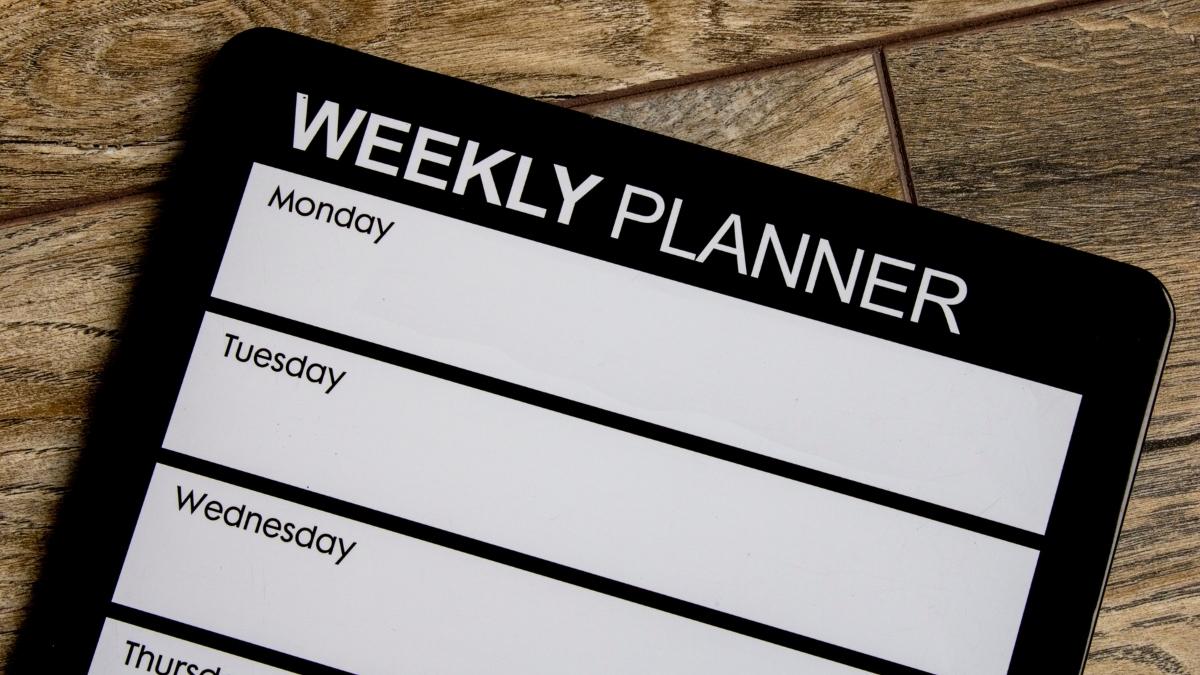
Start with a warm-up for 5–10 minutes. March in place. Do light band pulls. Add gentle hip and shoulder moves.
Day 1: Lower Body
- Resistance band squats – 3×12–15
- Band deadlifts – 3×10–12
- Band leg press – 3×15–20
Day 2: Rest or Active Recovery
Light walking or stretching.
Day 3: Upper Body
- Chest press – 3×10–15
- Band rows – 3×12–15
- Overhead press – 3×10–15
Day 4: Rest
Rest or Active Recovery
Day 5: Full Body
Full Body
- Push-ups – 3×8–20
- Farmer’s carries – 3–4 rounds
- Planks or side planks – 30–60 seconds
Days 6–7: Active Recovery
Walk, swim, or stretch.
Finish each workout with a cool-down. Hold easy stretches for your legs, chest, shoulders, and back. Keep them at 15–20 seconds each.
This routine gives you structure so you don’t waste time guessing what to do.
15. How to Track Progress and Stay Consistent
Most people start to see real changes in 4–8 weeks when they train at home the right way. You can expect about 0.5 to 2 pounds of muscle each month if you stay steady.

The best way to see progress is simple. Take photos every two weeks. You don’t notice small changes in the mirror, but the camera does. Track strength changes too. Maybe you can do more reps. Maybe you can use a thicker band. Both count.
Also pay attention to daily life. If carrying groceries feels easier or stairs feel smoother, that means your training works.
Keep a list of backup exercises so you never miss a session. If you can’t press, row. If you can’t squat, do step-ups. Flexibility keeps your streak alive.
Consistency is the real secret. Small steps, repeated often, create results you can feel and see.
At the Last,
Building muscle after 50 doesn’t mean lifting heavy weights or risking injury. Studies show you can grow muscle with lighter loads as long as you push yourself during each set. That’s why this 15-point plan works.
Resistance bands and bodyweight moves give you enough tension to fight muscle loss, boost strength, and keep you steady in daily life.

Start small. Pick 2–3 exercises from the routine and do them today. Focus on form. Add reps or stronger bands when your body feels ready. Give yourself time to recover so your muscles can rebuild.
This dad strength approach—smart resistance training, steady protein, and solid recovery—gives you a simple blueprint to stay strong after 50 without heavy weights. Your future self will be glad you began now.

